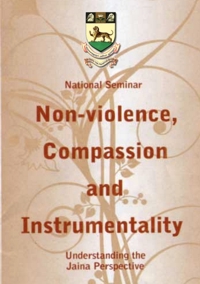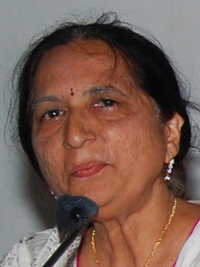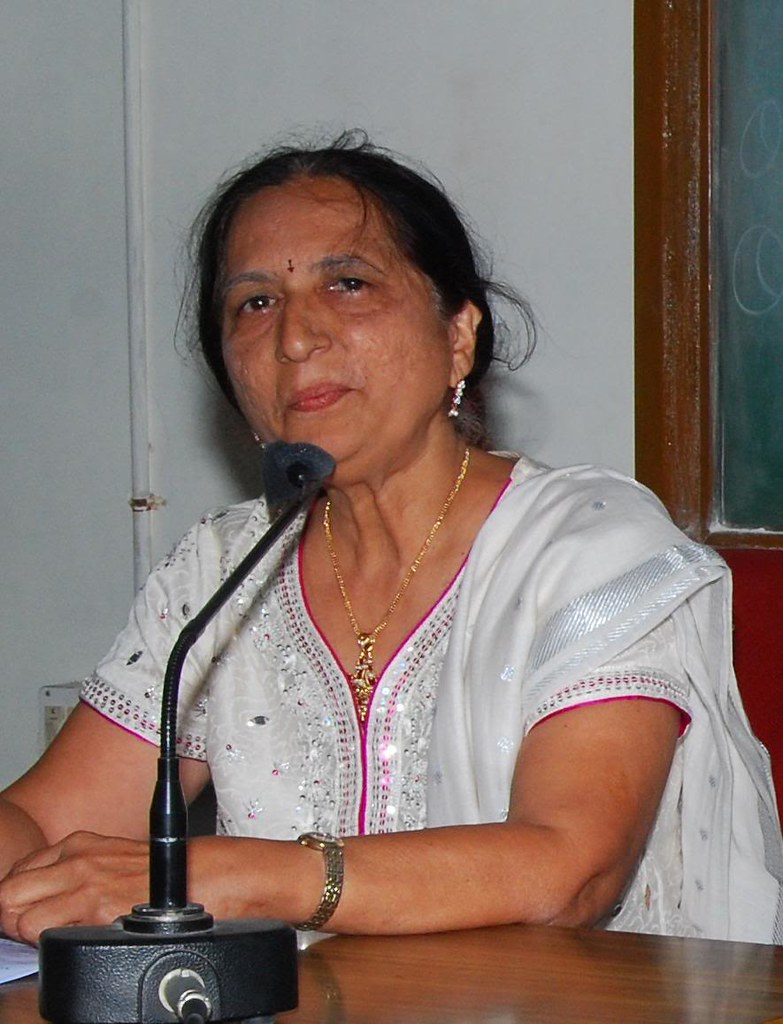Chennai 2009: Non-violence, Compassion and Instrumentality - A Jaina Perspective
 | Non-violence, Compassion and InstrumentalityA Jaina PerspectiveSeminar organized by the Department of Jainology of the University of Madras, 13 and 14 February 2009 Chennai, India |
Non-Violence
13.2.2009
There are so many different kinds of violence. Let us look at the whole structure of violence. There are gross and subtle types of violence as described in Jainism.
Violence is a form of energy; it is energy utilized in a certain way which becomes aggression. We have built a society which is violent and we as human beings are violent. Is it possible to end this tremendous violence in oneself? Jain philosophy says: “Yes, we can defeat violence and cherish non-violence.”
Non-violence, ahimsa is the central doctrine of Jainism. Jainism is therefore called the non-violence religion or darśana. Actually non-violence is practiced in all religions, but it is the precious jewel of Jainism. There are lots of laws to follow this doctrine. All actions Jains do are directed towards avoiding harm to other living beings. On all the three levels: physical, vocal and mental.
Basically human nature is kind, but the other side is very beastly. With practice we must control that.
What makes Jains great is that whatever they believe in, they also practice.
The five main vows which every Jain is supposed to respect or obey are:
1. To abstain from violence.
2. To abstain from lying.
3. To abstain from stealing.
4. To abstain from sexual misconduct (brahmāchārya): and
5. To be free from worldly attachment.
Tattvārtha Sūtra:
Violence is to hurt the beings through vibration due to the passions, which agitate mind, body or speech (vii: 13).
Uttaradhyāyana Sūtra:
Seeing that everything that happens to somebody affects him personally, and should be friendly towards all beings; being completely free from fear and hatred, one should never injure a living being (6.6).
Jñānamarnava:
Violence alone is the gateway to the miserable state; it is also the ocean of sin; it is itself a terrible hell and is surely the densest darkness (8:19);
and:
If a person is accustomed to commit injury, then all his virtues like selflessness, greatness, desirelessness, penance, liberality or munificence are worthless (8: 20)
Daśavaikālika Sūtra:
All living creatures desire to live; nobody wishes to die and hence it is that the Jain monks avoid the terrible sin of injury to living beings.
Jains are people who adhere to a religion of non-violence, known as Jainism. The word Jain is derived from jina which means ‘conqueror.’ He is one who conquers his senses. The Jains yearn for simplicity and happiness of each and every living being. Even the Bhagavad Gītā says that the mind as reasoning power is greater than senses. Non-violence is so importance that all Jains are vegetarians and none of them will ever purposely harm a living being. This is called sankalpi violence. Jains eat no vegetables that grow under the ground because there is lot of violence involved.
Non-violence is the keynote of Jainism since thousands of years.
Purushārthasiddhi Upāya:
Any injury to the material or conscious vitalities caused by passionate activity of mind, body or speech is certainly called violence (iv: 43); Certainly the non-appearance of attachment and other passion is ahimsa (iv: 44).
Āchāraṅga Sūtra:
Violence is a great impediment to spiritual awakening, and someone who indulges in doing harm to living beings will not reach enlightenment; harming other beings is always harmful and injurious to oneself - it is the main cause of someone’s non - enlightenment (i.1.2).
Sūtrakṛtaṅga:
Knowing that all evils and sorrows arise from injury to living beings, and that it leads to unending enmity and is the root cause of great fear, a wise man who has become awakened should refrain from all sinful activities (i.10.21).
For the well-being of the confused creatures in the world that most of us are, the layman will follow his natural feeling and emotion of active compassion. Mahavira described ahimsa thus, 2600 years ago: “The saint with true vision conceives compassion for the entire world.”
People indulge in violence mainly due to the following reasons:
- In order to protect their life (everyone loves life; therefore they make use of wealth, medicine, and other things).
- In order to gain praise and fame.
- In order to get status and prestige.
- In order to get respect and veneration (they participate in war and such violent contests).
- Birth (rituals connected with it).
- Death (various rituals).
- Inspired by the desire of liberation, (they indulge in religious rituals like animal sacrifice).
- In order to be free of sorrows.
In the Āchāraṅga the area of violence is described with all major components of ecology.
The description starts with the violence towards earth-bodied beings (prithivīkāya). In the same style water-bodied, air-bodied, fire-bodied, and plant-bodied beings have been defined before proceeding to the animal world. “Therefore, knowing about the unexpressed sufferings of the earth-bodied (etc.) beings one (the sagacious) should not harm earth-bodied beings himself neither make others doing so.” (Āchāraṅga 1.2.17).
It also compares the plant-body with the human body:
- This human body is born, so is this plant.
- This human body grows, decays, takes food, so does this plant.
- This human body is not permanent, so is this plant.
- This human body gets strong with nutrition and weak without it, so does this plant.
- This human body undergoes many changes, so does this plant. [Āchāraṅga 1.5.40 ]
After defining the project and target of violence, Āchāraṅga mentions śastra (weapon) as a means of violence. To hurt or destroy a thing by employing a weapon is called violence (hiṁsā). And this weapon is defined as anything, including our intention, which has attributes contradictory, conflicting or hostile to those of the objects against which it is directed. To contaminate earth, water, air, fire, plants with things having such conflicting properties, is violence.
Āchāraṅga states: “He who has properly understood the violence related to six life forms, is a parijñāta-karma muni (a discerning sage or an ascetic who with a discerning attitude abandons violence).”[Āchāraṅga 1.7.56]
Jainism teaches us a simple religious lifestyle of ethics and nonviolence, a path that everyone can follow. It denies a creative God, but confirms that every being is a god in essence. The path depicted in the Jains’ teaching is designed to “improve the soul through right insight, right knowledge and right conduct.”
The ultimate aim of the soul’s pilgrimage through all the forms in space and time is fully conscious union with the soul’s inherent qualities: infinite knowledge, infinite purity and infinite freedom within the universe.
Ahiṁsā is a universal and eternal truth.
 Dr. Vijaya K. Gosavi
Dr. Vijaya K. Gosavi
